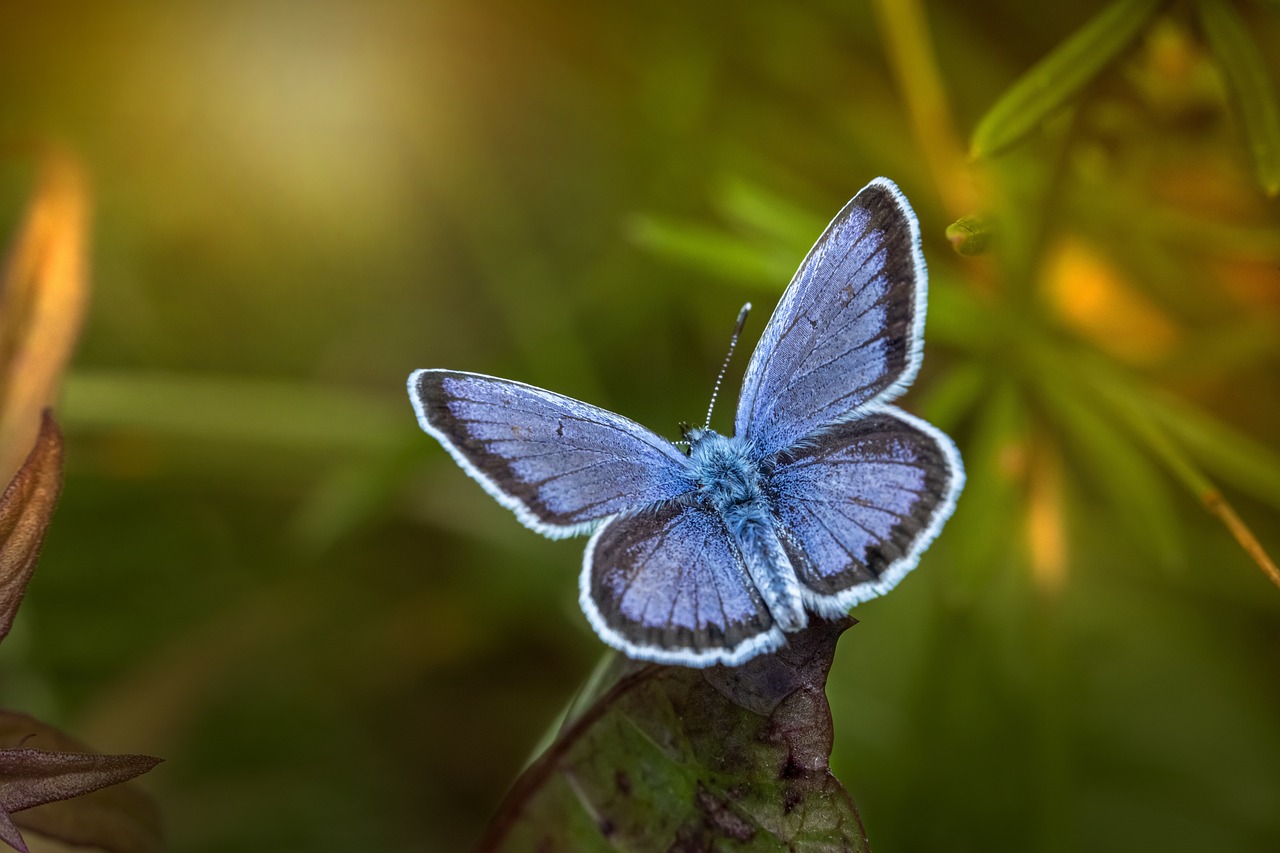The Silver-studded Blue (Plebejus argus) is a striking and delicate butterfly belonging to the family Lycaenidae. This species is known for its distinctive markings and habitat preferences. Here’s an overview of the Silver-studded Blue:
Appearance:
- Size: The wingspan ranges from 25 to 30 millimeters.
- Coloration:
- Males: Brilliant blue upper wings with a black border and white fringe.
- Females: Brown upper wings with orange spots near the edges.
- Undersides: Both sexes have pale greyish-brown underwings with characteristic black spots and a series of metallic, silver-blue scales near the hindwings’ edges, giving the species its common name.
Habitat:
- Preferred Habitats: This butterfly favors heathlands, grasslands, and areas with sandy soils. It thrives in environments with low-growing vegetation and sparse, open areas.
- Geographic Range: The Silver-studded Blue is found across Europe and parts of Asia, with notable populations in the UK, particularly in southern England and Wales.
Behavior:
- Feeding: Adults feed on nectar from various flowers, including heather, gorse, and thyme. The larvae feed on plants such as gorses, heathers, and bird’s-foot trefoil.
- Activity: They are most active during sunny days, typically from mid-June to August, depending on the climate and location.
- Flight: The flight of Plebejus argus is low and fluttering, often close to the ground.
Life Cycle:
- Eggs: Females lay eggs singly on the leaves or stems of host plants. The eggs are white and dome-shaped.
- Larvae: The caterpillars are green with darker stripes and have a symbiotic relationship with ants, which protect them in exchange for a sugary secretion produced by the larvae.
- Pupae: Pupation occurs in the soil or leaf litter, often in ant nests, providing additional protection.
- Adults: Adults emerge in early summer, with one generation per year.
Ecological Role:
- Pollination: As nectar feeders, adults play a role in pollinating flowers.
- Ant Mutualism: The larvae’s relationship with ants is an excellent example of mutualism, benefiting both species.
- Food Web: Both larvae and adults serve as prey for birds, spiders, and other insectivores.
Conservation Status:
- Population: The Silver-studded Blue is considered near threatened in some regions due to habitat loss.
- Threats: The main threats include habitat destruction due to urban development, agricultural intensification, and the loss of heathlands.
Conservation Efforts:
- Habitat Management: Conservation efforts focus on preserving and restoring heathland habitats. This includes controlled grazing, periodic burning, and preventing scrub encroachment to maintain open landscapes.
- Monitoring: Populations are monitored to track changes in distribution and abundance, aiding in conservation planning.
Interesting Facts:
- Ants and Larvae: The larvae produce a sugary substance that attracts ants, which in turn offer protection from predators and parasitoids.
- Color Variations: The blue coloration of males is more vivid during the early part of the flight season.
- Lifecycle Synchronization: The lifecycle is closely aligned with the phenology of its host plants and the activity patterns of the ants it relies on.
Identification Tips:
- Blue Males: Look for the vivid blue wings of males, especially in sunny heathland areas.
- Underside Patterns: Note the silver-blue spots on the underside of the hindwings, which are distinctive to this species.
- Habitat Preference: Observing them in their preferred heathland and sandy soil habitats can help with identification.
In summary, the Silver-studded Blue (Plebejus argus) is a fascinating butterfly with unique ecological relationships and specific habitat needs. Conservation efforts are crucial for maintaining and enhancing the habitats necessary for its survival, ensuring this beautiful species continues to thrive in the wild.
Visited 858 times, 4 visit(s) today
Views: 1315
Subscribe to the newsletter:
